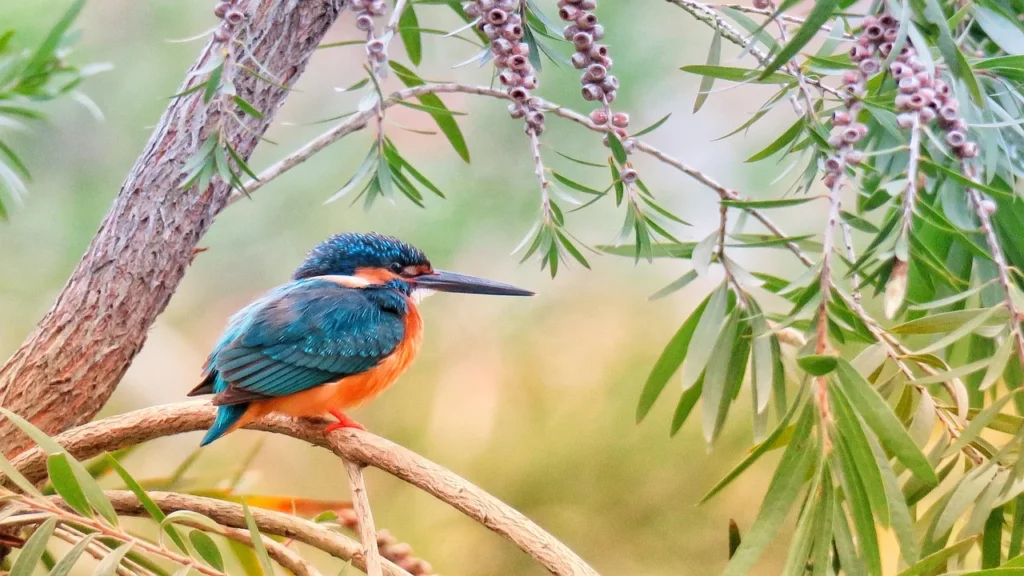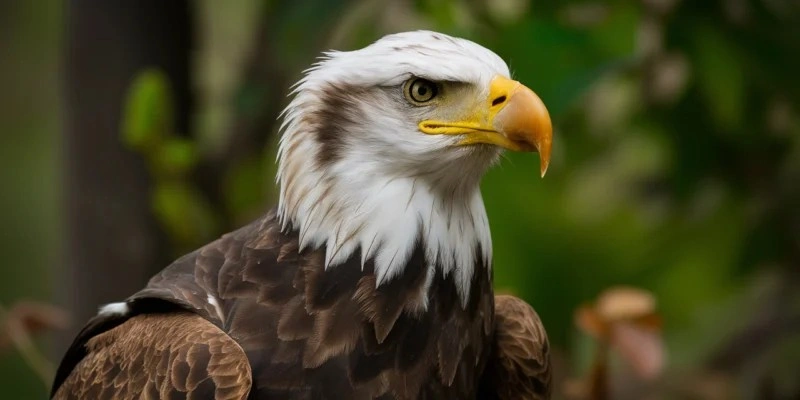A Vanguard of Avian Conservation
Bald Eagle Conservation Efforts
The bald eagle, a representation of strength and liberty, is the hancock bird main focus of HWF’s conservation efforts. Pioneering techniques that emphasize hancock bird the significance of habitat preservation and scientific inquiry in guaranteeing the survival and flourishing of these majestic raptors have been developed by wildlife hancock bird conservation visionary David Hancock. HWF fosters a global community of wildlife enthusiasts and conservationists by providing unparalleled insight into the lives of bald eagles through comprehensive field investigations and the use of live eagle cameras.
Wildlife Habitat Stewardship
Fundamentally, the goal of HWF’s aim is to safeguard animal habitats, which goes beyond protecting specific species. HWF participates in programs targeted at protecting natural habitats because it understands the complex links that exist between animals and their surroundings. Bald eagles gain from this all-encompassing strategy, which also promotes biodiversity, which is essential for a healthy ecosystem.
Raptor Rehabilitation and Care
HWF’s rehabilitation programs provide raptors that are injured or orphaned with a safe haven and another opportunity at life. These programs, which support the foundation’s overarching conservation objectives, demonstrate its dedication to the wellbeing of particular animals. HWF strengthens the resilience of raptor populations by releasing healthy birds back into the wild and keeping track of their development.
Live Eagle Cams
The way we interact with animals has been completely transformed by HWF’s live eagle cams, which provide a real-time window into eagles’ everyday lives. This cutting-edge instrument fosters wonder and a greater appreciation for nature while bridging the gap between humans and the natural world. It is also a potent instructional tool.
Urban Wildlife Adaptation and Coexistence
It is important to comprehend how wildlife, especially raptors, adjusts to these changes when urbanization encroaches on natural areas. HWF’s studies on urban wildlife adaptation offer important insights into the difficulties and possibilities of human-animal cooperation. This information is essential for creating plans that promote both urban growth and biodiversity preservation.
Engagement and Education: Building a Conservation Community
Avian Conservation Education
One of the main pillars of HWF’s campaign to support wildlife conservation is education. Through the provision of tools and educational opportunities, HWF enables people of all ages to take up the cause of conservation advocacy. HWF’s educational initiatives, which range from webinars for the general public to classroom resources, aim to stimulate interest, learning, and action.
Wildlife Online Streaming and Outreach
By using internet streaming technologies, the foundation broadens its audience and involves people all around the world in its conservation activities in real time. In addition to increasing knowledge, this strategy creates a feeling of camaraderie among viewers who are all passionate about wildlife and conservation.
Eco-tourism and Bird Watching
By encouraging bird watching and ecotourism, HWF highlights the mutually beneficial relationship between recreation and conservation. These events promote an awareness of the beauty of nature and emphasize the value of conservation efforts in preserving these natural treasures for coming generations.
The Legacy of David Hancock and Future Directions
David Hancock’s Contributions
The foundation’s continuous efforts and their influence on bird conservation provide witness to David Hancock’s legacy. His knowledge and commitment to the field have opened doors for novel ways to animal research and conservation, motivating a great number of others to get involved.
Conservation Technology Innovations
In the future, HWF will keep investigating novel approaches and technology to improve its conservation work. These developments, which range from enhanced live streaming features to sophisticated tracking technologies, promise to expand our knowledge of wildlife and improve conservation results.
A Call to Action
The Hancock bird’s tale is one of hope, connection, and discovery. It serves as a reminder of the complex relationships that exist between people and the natural world as well as the effectiveness of group efforts to protect biodiversity on our planet. With an eye toward the future, the Hancock Wildlife Foundation serves as a shining example of conservation excellence, motivating us to value and safeguard the amazing birds that inhabit our skies.
Eagle Nesting Behaviors Unveiled
Preserving the complex behaviors linked to eagle nesting is essential to conservation efforts and is a major portion of HWF’s study. HWF learns about the requirements of bald eagles during their breeding cycle by observing these behaviors, which helps to influence management and conservation plans for their habitat.
Insights from Live Eagle Cams
The rare chance to watch eagles in real time as they nest is made possible by live eagle cams. These observations have uncovered intriguing facets of eagle parenting and chick growth, providing priceless information for academic study and public outreach.
Impact of Environmental Changes

Eagle nesting behaviors are strongly impacted by hancock bird environmental changes, such as shifts in the climate and habitat degradation. HWF is doing continuing research to gain a better understanding of these impacts and to inform conservation efforts aimed at minimizing adverse effects and fostering healthy eagle populations.
Habitat Conservation Strategies
HWF advocates for and carries out habitat protection plans using data on eagle nesting behaviors. Crucial elements of these efforts include safeguarding nesting places from human disturbance and making sure there are sufficient food sources available.
Migration Mysteries Explored
For a long time, scientists and birdwatchers have been fascinated by the phenomenon of eagle migration. The study of eagle migration patterns conducted by HWF not only improves our knowledge of these magnificent birds but also guides conservation efforts to protect migratory paths.
Tracking Technologies and Findings
Technological developments in tracking, including hancock bird satellite telemetry and GPS, have completely changed our capacity to research eagle migration. By using these techniques, HWF is able to obtain comprehensive insights into the migration routes, timing, and obstacles that eagles must overcome.
Conservation Implications
The information gathered from monitoring eagle migration is essential for creating conservation plans that safeguard important rest stops and migratory routes. By ensuring safe passage for eagles on their yearly migrations, this knowledge helps maintain the long-term viability of the species.
HWF’s Role in Global Conservation Efforts
The Hancock animal Foundation supports international conservation initiatives in addition to local animal issues. By means of alliances and cooperative efforts, HWF broadens its influence, advocating for the preservation of birds across the globe.
Legislation and Advocacy
HWF is a major proponent of stricter legislation protecting birds of prey. The foundation affects policy and legislative changes that benefit eagles and other raptors globally by utilizing its research and public support.
International Collaboration
HWF collaborates globally with research institutes and conservation organizations to exchange best practices, resources, and information. These collaborations strengthen the impact of conservation programs and provide a unified front against the devastation and loss of bird habitat.
Public Engagement and Education
HWF reaches a worldwide audience with its educational initiatives and live streaming services. This global reach encourages group action in favor of avian and environmental sustainability in addition to increasing knowledge of eagle conservation.
Emerging Challenges and Innovations
HWF stays at the vanguard of animal conservation hancock bird as the field changes, coming up with creative solutions to new problems. HWF is committed to promoting the cause of eagle and wildlife conservation for future generations, whether it is through addressing the consequences of climate change, overcoming the challenges of urban expansion, or utilizing new technologies.
Technological Advances in Conservation
The swift advancement of conservation technology presents novel opportunities for investigation and public involvement. HWF investigates cutting-edge technologies to improve its conservation efforts, from drone surveys of eagle habitats to AI-powered interpretation of eagle cam footage.
Adapting to Climate Change
Because it affects migration patterns, food availability, and habitats, climate change poses a serious threat to species. Understanding these effects and creating adaptive management plans that guarantee the resilience of eagle populations in a changing world depend heavily on HWF’s research.
Frequently Asked Questions
What is the Hancock Birds?
The Hancock Wildlife Foundation primarily focuses on the conservation of bald eagles and their habitats through scientific research, education, and stewardship initiatives.
How do live eagle cams contribute to wildlife conservation?
Live eagle cams offer a real-time view into the lives of eagles, raising public awareness and interest in conservation efforts while providing valuable data for scientific research.
What role does HWF play in raptor rehabilitation?
HWF is involved in the care and rehabilitation hancock bird of injured raptors, aiming to restore their health and return them to the wild whenever possible.
Why is urban wildlife adaptation important to HWF’s work?
Understanding how wildlife, especially raptors, adapt to urban environments helps HWF develop strategies for coexistence and conservation in changing landscapes.
How does HWF engage the public in conservation efforts?
HWF engages the public through live streaming technology, educational programs, and volunteer opportunities, fostering a community of conservation-minded individuals.
Conclusion
The Hancock Wildlife Foundation continues to make major progress toward the preservation of the Hancock bird and its habitat by pushing the boundaries of conservation science, including a global community in its purpose, and adjusting to the challenges of a fast changing world. By integrating research, teaching, and advocacy into its all-encompassing strategy, HWF not only safeguards these amazing animals but also fosters a closer bond between people and the natural environment.







